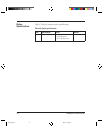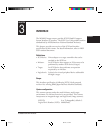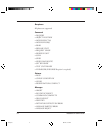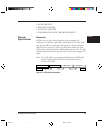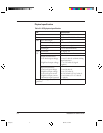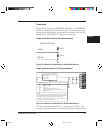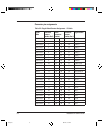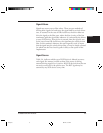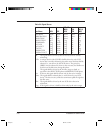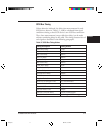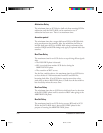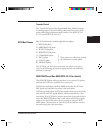
3-8 M3099GX/GH OEM Manual
SCSI Bus Signals (See ANSI SCSI-2 4.6)
Table 3.3 SCSI Bus Signals
Description
An "OR tied" signal that indicates that the bus is
being used.
An "OR tied" signal used by an initiator to select
a target or by a target to reselect an initiator.
A signal driven by a target that controls the
direction of data movement on the DATA BUS
with respect to an initiator. True indicates input
to the initiator. This signal is also used to
distiguish between SELECTION and
RESELECTION phase.
A signal driven by a target during the MESSAGE
phase.
A signal driven by a target on the A cable to
indicate a request for an ACK information
transfer handshake.
A signal driven by an initiator on the A cable to
indicate an acknowledgement for a REQ
information transfer handshake.
A signal driven by an initiator to indicate the
ATTENTION condition.
An "OR tied" signal that indicates the RESET
condition.
Eight data bit signals, plus a parity bit signal that
from a DATA BUS. DB(7) is most significant bit
and has the highest priority during the
ATTENTION phase. Bit number, significance
and priority decrese downward to DB(0). A data
bit is defined as one when the signal value is true
and is defined as zero when the signal value is
false. Data parity DB(P) shall be odd. Parity is
undefined during the ARBITRATION phase.
Signal
BSY(BUSY)
SEL(SELECT)
C/D
(CONTROL/DATA)
MSG(MESSAGE)
REQ(REQUEST)
ACK
(ACKNOWLEDGE)
ATN(ATTENTION)
RST(RESET)
DB(7-0,P)
(DATA BUS)
#03.pm5 98.2.22, 1:31 PM8



